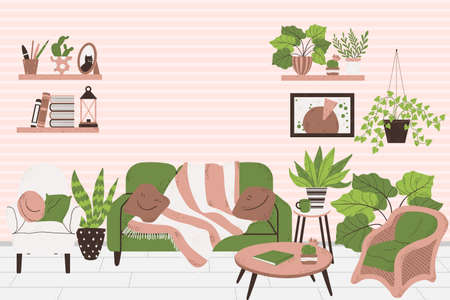Getting Started: Sustainable Planning for Your Backyard
Embarking on a DIY eco-friendly outdoor project is an exciting way to transform your backyard while caring for the planet and your wallet. Before diving into your creative ideas, its important to lay a sustainable foundation by planning ahead. Thoughtful preparation helps you reduce waste, save money, and ensure that your projects truly benefit both your home and the environment.
Tips for Eco-Friendly Project Planning
Start by assessing your backyard’s needs and identifying which spaces you want to improve. Prioritize projects that solve real problems—like adding shade, creating a compost area, or building pollinator habitats—so your efforts have lasting value. Set clear goals and a realistic budget to keep your plans focused and manageable. Throughout the process, aim to use what you already have before buying new materials.
Choosing Reclaimed Materials
One of the best ways to minimize environmental impact is by selecting reclaimed or upcycled materials. Repurpose old pallets into planters, use salvaged bricks for pathways, or breathe new life into discarded wood for benches and tables. Not only does this give materials a second chance, but it also adds unique character and warmth to your space.
Sourcing Local Supplies
Whenever possible, shop locally for supplies like soil, plants, or hardware. Supporting local businesses reduces transportation emissions and fosters community connections. Visit neighborhood hardware stores, garden centers, or browse local online marketplaces for secondhand treasures. By making mindful choices at every step, you’ll set the stage for outdoor projects that are as kind to the Earth as they are beautiful in your backyard.
DIY Compost Systems: Turning Kitchen Scraps into Garden Gold
Composting is one of the easiest and most impactful eco-friendly projects you can start in your own backyard. Not only does it help reduce kitchen and yard waste, but it also creates nutrient-rich soil that your garden will love. Plus, building a compost bin doesn’t have to break the bank. Here’s a simple, step-by-step guide to creating your own DIY compost system using materials you may already have at home or can easily find at a local hardware store.
Step-by-Step Guide to Building an Affordable Compost Bin
Materials You’ll Need
| Material | Where to Find | Estimated Cost |
|---|---|---|
| Wooden pallets or plastic storage bins | Recycled from stores, warehouses, or home improvement centers | $0-$20 |
| Wire mesh or chicken wire (optional) | Hardware store | $5-$10 |
| Nails or zip ties | Toolbox or hardware store | $2-$5 |
| Lid or tarp (for covering) | Old tarp or repurposed plastic lid | $0-$10 |
Instructions for a Basic Pallet Compost Bin:
- Choose a Location: Pick a spot in your yard that’s convenient but not too close to your house. Partial shade is ideal.
- Create the Bin Structure: Stand three wooden pallets on their sides to form a U-shape. Secure them together with nails or zip ties.
- Add the Fourth Side: Attach the last pallet as the front side, leaving it removable for easy turning and harvesting of compost.
- (Optional) Add Wire Mesh: Line the inside with wire mesh if you want to keep out critters.
- Add a Lid: Place a tarp or old plastic lid on top to keep moisture in and pests out.
- Start Composting: Add alternating layers of green waste (fruit and veggie scraps, coffee grounds) and brown waste (leaves, cardboard, twigs). Turn every couple of weeks for best results.
Benefits of DIY Composting for Your Backyard and the Environment
- Saves Money: Cuts down on trash bills and reduces need for store-bought fertilizer.
- Nourishes Your Soil: Provides organic matter that supports healthy plant growth.
- Lowers Carbon Footprint: Diverts organic waste from landfills, reducing methane emissions.
- Keeps It Local: Turns your everyday scraps into something valuable right at home—no need for extra resources or transportation!
Troubleshooting Common Issues
| Problem | Possible Cause | Solution |
|---|---|---|
| Pile smells bad | Too much green waste, not enough air circulation | Add more brown material and turn pile more often |
| Pile is too dry/slow to decompose | Lack of moisture or nitrogen-rich materials | Add water and more green materials like food scraps or grass clippings |
| Pests attracted to bin | Dairy, meat, or cooked foods added; no cover on bin | Avoid these items and always use a lid or tarp cover |
This straightforward DIY project brings American backyard sustainability to life—saving money, reducing landfill waste, and creating lush gardens all season long!

3. Rainwater Harvesting Made Easy
Looking to keep your backyard green while saving money and helping the environment? Rainwater harvesting is a simple, cost-effective way to make your outdoor space more sustainable. By collecting and reusing rainwater, you can reduce your water bills, conserve resources, and create a thriving garden—all with some easy DIY solutions.
Why Harvest Rainwater?
In many parts of the U.S., droughts and water restrictions are becoming more common. Using harvested rainwater for your plants, lawn, or even washing your patio means less reliance on municipal water. Plus, rainwater is naturally soft and free from chemicals, making it ideal for nurturing healthy plants.
DIY Rain Barrel Solutions
You don’t need fancy equipment to start harvesting rainwater. Repurposed food-grade barrels or large trash bins can easily be converted into rain barrels. Simply attach a spigot near the bottom, cut an opening at the top to fit under a downspout, and add a mesh screen to keep out debris and mosquitoes. Place the barrel under your gutter’s downspout to collect runoff every time it rains.
Creative Upcycled Ideas
For an even greener approach, try using salvaged materials like old wine barrels or recycled plastic tubs. Paint or decorate them to match your outdoor style—eco-friendly can be beautiful! Stack bricks or concrete blocks underneath for added height and easier bucket filling.
Smart Water Reuse Tips
Use the collected rainwater for watering flower beds, vegetable gardens, or even indoor plants. You can also connect multiple barrels together with hoses for extra storage if you have a larger yard. Just remember: In some states, there are regulations about how much rainwater you can collect, so check local guidelines before starting your project.
With these affordable and creative rainwater harvesting ideas, you’ll keep your backyard lush all season long while doing your part for the planet—one drop at a time!
4. Upcycled Planters and Raised Garden Beds
One of the easiest and most satisfying ways to green up your backyard is by creating upcycled planters and raised garden beds. Not only do these projects reduce waste, but they also add a unique, personal touch to your outdoor space—all without breaking the bank. By using found or salvaged materials like pallets, barrels, crates, and even old dresser drawers, you can craft beautiful and functional garden features that are kind to the environment.
Why Choose Upcycled Materials?
Upcycling keeps useful items out of landfills and reduces demand for new resources. Plus, every piece tells a story and gives your backyard a one-of-a-kind charm. Whether you love the rustic look of weathered wood or the industrial vibe of metal barrels, there’s an option for every style.
Instructions: Transforming Pallets, Barrels, and More
| Material | Project Idea | Basic Steps | Eco-Friendly Tip |
|---|---|---|---|
| Pallets | Vertical planter or raised bed |
|
Look for heat-treated (HT) pallets; avoid chemically treated ones. |
| Barrels (plastic or metal) | Tall planter or herb garden |
|
Repurpose food-grade barrels for extra safety. |
| Dresser Drawers/Crates | Tiered planter boxes |
|
Use non-toxic sealants to protect wood from moisture. |
Finishing Touches for Style and Sustainability
Add a layer of mulch or river rocks on top of the soil to retain moisture and prevent weeds. Incorporate native plants whenever possible—they require less water and maintenance while supporting local wildlife. For added flair, paint your planters with eco-friendly outdoor paints or let them weather naturally for an earthy look.
A Community Approach
If you have extra materials left over, consider sharing them with neighbors or starting a community garden project. Upcycling together not only saves resources but also builds stronger connections within your neighborhood—an essential part of sustainable living in American communities.
5. Native Landscaping for a Low-Maintenance Yard
Why Go Native?
Designing your yard with native plants is a smart, sustainable choice that fits perfectly with eco-friendly outdoor projects. Native landscaping not only reduces water and maintenance needs, but also provides vital habitat for birds, butterflies, and local pollinators. Plus, it’s a budget-friendly way to add natural beauty to your backyard while supporting the environment.
Getting Started: Planning Your Native Garden
First, do a little research about the native plant species in your region—local extension offices or garden centers can offer great advice. Sketch out your space and note areas that get full sun, partial shade, or are prone to dryness. Choose native plants suited to these conditions for best results and easy care.
Plant Selection Tips
- Diversity matters: Mix flowering perennials, shrubs, and grasses to provide year-round interest and food sources for wildlife.
- Group by water needs: Arrange plants with similar watering requirements together to conserve water and simplify irrigation.
- Layer heights: Use taller species at the back of beds and shorter ones up front to create depth and structure.
Benefits Beyond Beauty
Native plants are adapted to local climate and soil, so they thrive with minimal fertilizer or pesticides. Their deep roots help prevent erosion and improve soil health. Most importantly, you’ll be creating safe havens for bees, butterflies, hummingbirds, and other beneficial wildlife right in your own backyard.
Eco-Friendly Maintenance Made Simple
Once established, native landscapes require less mowing, watering, and overall upkeep than traditional lawns. Just add mulch to retain moisture and suppress weeds, prune occasionally as needed, and enjoy the vibrant life your eco-friendly yard supports.
6. Eco-Conscious Outdoor Decor & Furniture
Transforming your backyard into a sustainable oasis goes beyond plants and pathways—it’s about curating outdoor decor and furniture that echo your commitment to the environment. Embracing the American outdoor lifestyle means creating spaces where friends and family gather, relax, and celebrate under the open sky. With a bit of creativity and elbow grease, you can craft unique pieces that are both functional and eco-friendly.
Repurposed Wood Creations
Salvaged wood from old fences, pallets, or barns is the perfect foundation for rustic tables, benches, or Adirondack chairs. Sand down the surfaces, treat the wood with non-toxic sealants, and assemble sturdy furniture that boasts both character and sustainability. Not only does this practice keep usable materials out of landfills, but it also gives your backyard a warm, lived-in charm reminiscent of classic American porches.
Upcycled Outdoor Accents
Look around your home for items that can be given new life outdoors. Mason jars become lanterns with solar lights inside; old tires can be transformed into vibrant ottomans with some rope and outdoor paint; broken ceramics can be fashioned into mosaic stepping stones or tabletops. These projects are budget-friendly, encourage creativity, and prevent unnecessary waste.
Native Stone & Natural Elements
Incorporate locally sourced stones, pebbles, or driftwood as natural art installations or functional pieces like side tables and fire pit surrounds. Using what’s abundant in your region cuts down on transportation emissions and helps your decor blend seamlessly with the local landscape—perfect for an authentic American backyard vibe.
Eco-Friendly Finishes & Fabrics
Select paints, stains, and finishes labeled low-VOC or non-toxic to protect both your health and the environment. When making cushions or throws for lounge areas, choose recycled or organic fabrics that are durable enough for outdoor use. Patterns inspired by nature—like leaves or wildflowers—add an inviting touch while staying true to eco-conscious principles.
Ultimately, DIY eco-conscious outdoor decor and furniture allow you to express personal style while honoring sustainability. Each handcrafted piece tells a story—about resourcefulness, community spirit, and respect for the planet—all essential values in today’s American backyard culture.


